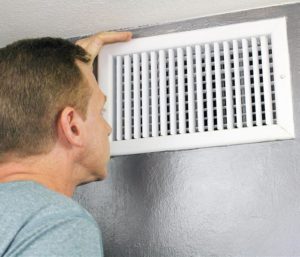In case you did not know it, your HVAC system can actually be an ally in the fight against mold growth. Properly designed and well maintained HVAC systems play a crucial role in providing sound environmental conditions that can prove detrimental to mold growth. However, not all systems have the necessary features or go through the recommended maintenance hence making them breeding grounds for mold spores. Once spores spread throughout your home, the cost of putting them back under control is astronomically high.
Mold requires organic nutrients, a growth surface, moisture and darkness for it to prevail. Unfortunately, most HVAC systems have lots of areas within their build that offer all of these four ingredients in abundance. If the design can therefore be altered a little bit so that one of ingredients is limited, mold would be no longer a problem.
If the problems around mold issues can be addressed early in advance preferably at the design stage through minor and relatively inexpensive changes, then the war against mold growth can be won at the initial point. Design changes can also be incorporated to existing systems, but this will come at a huge cost that may not be justifiable to the homeowner.
Dealing with the Condensate
During the design process, condensate drain pans do not receive as much attention, yet they are critical components in the fight against mold growth. The drain pans are located under and downstream from the cooling coils to collect the moisture which condenses and falls off from the coils. In a properly designed and well maintained system, all the condensate is collected and efficiently drained away from the system. For them to be effective, drain pans must be positively sloped to provide rapid draining of the condensate from the HVAC system. The drain lines must also be bigger enough to reduce the risk of clogs that often leads to flooding.
Cleanable Surfaces
Irrespective of how well designed and maintained a HVAC system is, things can go wrong. Malfunctions tend to occur as well as leakages that cause dirt to accumulate on coils and other surfaces. To minimize this, the materials and finishes chosen for the air handler and the ductwork must be an excellent fit. For instance, the ductwork interior can be lined with insulation so as to reduce energy losses and make the system operation quieter. The surfaces must also be smooth and cleanable.
Accessibility
Regular inspection and cleaning is one sure way to get rid of mold. However, for this to be effective, the areas to be cleaned must be accessible. All areas where moisture and dirt are likely to accumulate such as filter sections and coils must be equipped with removable panels and hinged doors.
Ultra Violet Light
Installation of ultra violet light in the system helps to kill lots of airborne microbes including mold. However, such UV installation must be done in a way not to expose the maintenance personnel to the light. The air velocities within the system must also be low enough to permit light sufficient time to kill the microorganisms.

